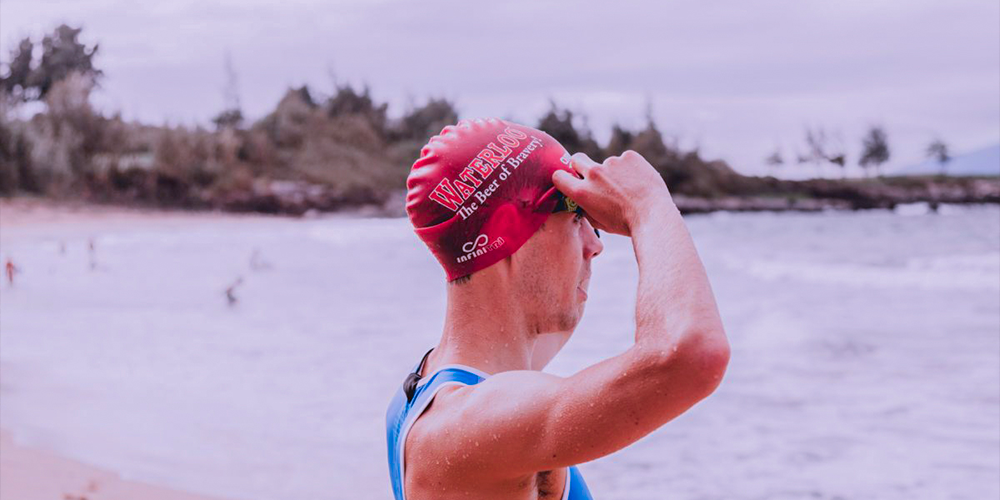You enjoy running, regularly sit in the saddle and occasionally jump in the pool – so why not aim for the long-term goal of an Ironman with the intention of reaching the finish line in a maximum of 15 hours?
If you are a regular competitor in all three triathlon disciplines, then you already have good prerequisites for an Ironman. If you approach the Ironman challenge primarily with the goal of ‘endurance’ and time comes second, then you must first take care of your basic endurance.
Master the crawl or save time for training?
Since an Ironman consists of three disciplines, the first question to ask is what comes first. Do you want to use the challenge of the Ironman to train all three disciplines equally or do you want to reach the finish line in the shortest possible time? Or in other words: do you want to learn to swim the crawl or, at most, do you want to race the breaststroke as the opening discipline?
We recommend version 1, in which we note that for previous ‘non-swimmers’ the time required for training is considerable compared to the time gained on the 3.8 km in relation to a breaststroke swimmer. But if you succeed in the crawl, the satisfaction is great.
If you are mainly interested in getting the best possible finish time and see the Ironman adventure more as a unique event, you should consider using your training time mainly for the other two disciplines. But in the end, the first Ironman should just be a fun time. Moreover, learning the crawl technique is a good investment for a long-term multisport future.
Train for long sessions
For the first Ironman, the trick is to have enough stamina and energy to get through the planned 15 hours without any major crises. In the two disciplines of cycling and running, the first credo is therefore very simple: train regularly for the longer units! What is important in your case is not a fast pace, but the ability to maintain a moderate but constant speed over a long period of time. First increase the training volume and only gradually increase the intensity. The situation is different in swimming, where continuous training is not the main factor, but rather technical training with many exercises (if possible under supervision).
6-11 hours per week
With a training time of around 6-11 hours per week, it should be possible to pass an Ironman in a year if you have the necessary basic requirements (regular sporting activity for a few years in all three disciplines). As a basic rule, you should be able to complete the Ironman partial distances (i.e. 4 km swimming/180 km cycling/40 km running) in the individual training weeks about three to four months before the Ironman. Here you will find the most important tips for the individual disciplines:
- Swimming: 3.8 kilometres means one and a half/two hours for a breaststroke swimmer and about one and a quarter/one and a half hours for an intermediate crawl swimmer. In the first phase, give swimming top priority and learn the crawl whenever possible. Ask a specialist to observe you and give you advice.
- Cycling: About seven to eight hours in the saddle is a long time. Not only for your muscles, but also for your musculoskeletal system in general. A comfortable sitting position is therefore essential to avoid neck and back problems. Get used to longer sessions at a fast pace right from the start and in the position you wish to compete in the Ironman. And regularly practice the right nutritional intake for long distances. In terms of energy, cycling is the decisive discipline in the Ironman, but it is also one that can be calculated well in advance with consistent training and wise nutrition. In terms of time, cycling training should take up about half of your total training.
- Running: A marathon at the end is a heavy ‘dessert’ that makes you lose your mind. Running is also the discipline that stresses the musculoskeletal system the most, although a fast city marathon is much more stressful than an Ironman marathon, where the 42.195 km are run much more slowly and/or with walking breaks. Gradually progress to longer distances until you can easily run for two hours at a time. Tip: complete combined cycling and running training. In this way you can promote endurance with units of several hours and at the same time moderate the strain on the musculoskeletal system. And don’t forget to adapt your muscles, tendons and ligaments to the increased loads with regular strength and flexibility training.
Triathlon/Ironman: How to handle the mass start
Text from FITforLIFE – This Blog article was made available to us from the Swiss Magazine FIT for LIFE. If you want to regularly read informative articles in the field of running and endurance sports, then click here.

